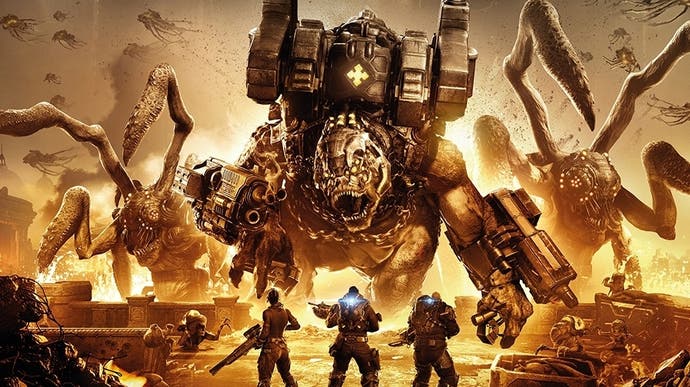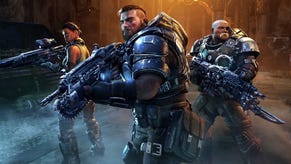Gears Tactics: state-of-the-art tech powers an excellent PC strategy game
Plus: next-gen variable rate shading technology put to the test.
We all love to jump on the hype train for the arrival of a hot new game, but Gears Tactics is a very different animal. Aside from viewing some early trailers, I approached final code with no expectations - I really didn't know what to expect at all. I went into this one almost completely 'unspoiled' then but suffice to say, I'm blown away by the quality of this game: both for its gameplay and technological design.
Gears Tactics is a turn-based squad tactics game made by Splash Damage and The Coalition, where you take control of up to four individual Gears troopers. The aim? To clear out Locust enemies, set-up defences and utilise special abilities and weapons to complete the mission at hand. In between missions you retreat back to your mobile base to equip new gear, including improved weapons and armour, and to upgrade your hero characters or surviving troops. It's a game that's one part X-Com and one part Dawn of War 2: you have a command unit, a Paladin-like brawler, troopers that excel at closer range and subterfuge, and of course, the requisite heavy weapons guy. It's a great squad tactics game, but what sets this one apart is its excellent triple-A presentation powered by one of the most potent engines in the business.
Much like Gears 5, Tactics has many cinematic sequences in between missions, showcasing a number of ultra high quality features, like lavishly detailed character models, great-looking bokeh depth of field, impressive facial animations and so much more. The triple-A graphical splendour is not just reserved for cutscenes, as the gameplay itself and environments are of a rather high quality, with rich textures, real-time shadows and dense geometry.
Gears Tactics utilises a further evolved version of the customised Unreal Engine 4 used to spectacular effect in Gears 5, so that means the game has special features only found in this bespoke revision of Unreal Engine 4 - like cone step mapping, an extremely effective dynamic resolution system, glossy screen-space reflections and many other features. However, as this is using a more recent iteration of the engine, further embellishments are added on top of Gears 5's already impressive feature set. First and foremost are the use of Unreal Engine 4's planar reflections. These are reflections that only work on a completely flat surface, usually parallel or perpendicular to the ground and usually accomplished by doubling the geometry below the render pane.
In a game like Gears Tactics, the camera is far above the playfield and at an angle where screen-space reflections are less effective than a first or third-person shooter. The overhead camera causes problems for screen-space reflections as there's so little in screen-space that can actually be reflected. Planar reflections fix this problem handily, while also allowing for the underside of objects to be reflected on the ground.
But perhaps the biggest headline addition to the Gears engine comes in the form of Variable Rate Shading - a hot topic at the moment as Microsoft has been talking about it a lot in its next-gen console marketing. Gears Tactics is the first DirectX 12 game we have tested that allows you to explicitly toggle the feature. Variable Rate Shading reduces the shading detail of surfaces that are dark or in movement, or areas where pixels are overly similar in colour to pixels next to them. This saves on performance, while keeping the degradation of shading quality only to the inner surface of an object - areas where the human eye (hopefully!) cannot see the cutback in quality. Currently, this feature is only available to Nvidia's Turing GPUs but as a part of DirectX 12 Ultimate, it is coming to future AMD's RDNA 2 GPUs - and of course, the Xbox Series X.

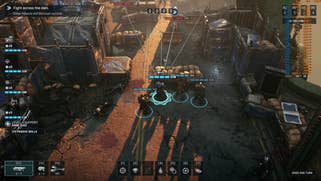
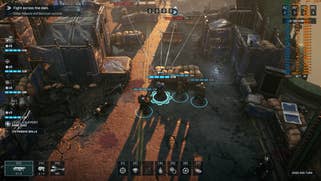

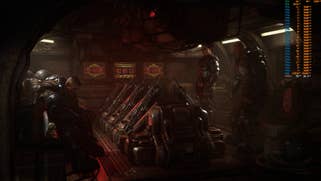
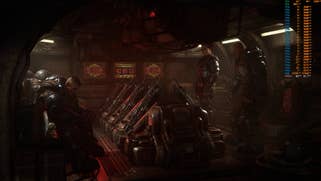
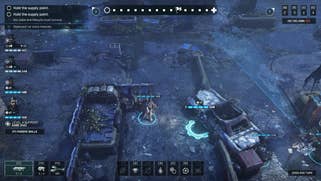
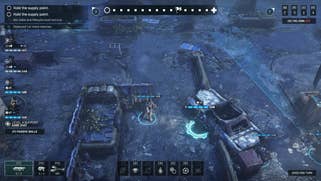
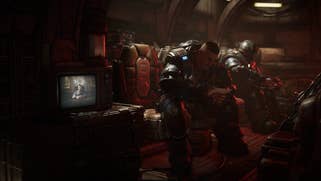
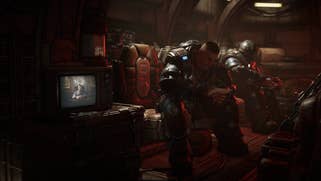
In Wolfenstein: The New Colossus, I had a really hard time to noticing the quality degradation that happens with VRS and it also added around 10 per cent more performance at 4K resolution. However, in Gears Tactics, the performance differential is more stark based on the available presets. At 4K with the highest settings possible and with no dynamic resolution in play, Gears Tactics runs at 47fps on an RTX 2080 Ti. Turning on variable rate increases performance by 13 per cent, while switching to the performance mode increases frame-rate by 21 per cent! Is this truly the next-gen game changer the performance uplift suggests? Well, as you might expect, it's complicated!
As I see it, there are two reasons why VRS has a greater effect on performance in this game than in Wolfenstein: The New Colossus (and indeed pseudo-sequel Wolfenstein: Youngblood). For starters, this game is more limited by its shading at ultra settings than Wolf TNC is at 4K, particularly when the planar reflections are in play. The second reason is because VRS in Gears Tactics appears to be somewhat more aggressive than that in the idTech 6 games. Even in the default on mode, it degrades regions of shading more aggressively than Wolf's performance mode, with the impact to quality more pronounced in Tactics' own performance alternative. Whether or not this trade-off is worth it is one of personal taste and one where you can balance VRS trade-offs with other performance wins.
I think the comparison to dynamic resolution scaling is important. Using DRS or VRS, we can run Gears Tactics at 4K60 on RTX 2080 Ti, with everything ramped up. With DRS, pixel count is decreased on all areas of the presentation, while VRS selectively degrades the shading for some pixels while maintaining the overall resolution. In both of its VRS modes, the algorithm is perhaps too aggressive but what particularly stands out is that UI elements have visible pixelation - which are even more pronounced in the performance mode, as the screenshot gallery above demonstrates. Meanwhile, with DRS active, UI elements are softer and less clear but don't have the same kind of visible aliasing. Inner surface detail with VRS can also have aliasing issues. However, if you look at object silhouettes, you can see how VRS' method of increasing performance has its own advantages. The edges of objects like character models are crisper-looking than DRS, which affects the entire image.
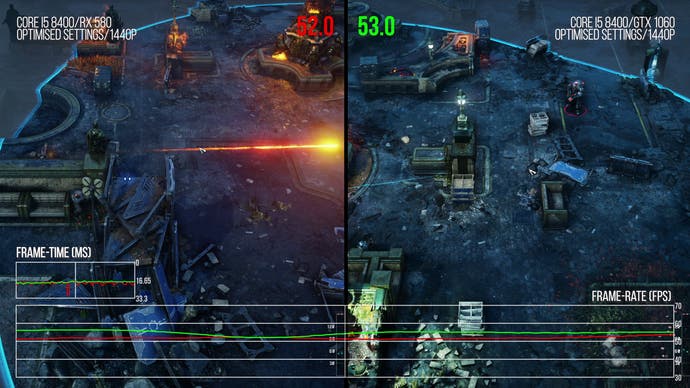
My personal preference in this game would be to utilise dynamic resolution scaling, because the VRS factor - even on the basic 'on' mode - is too aggressive for this type of game. Gears Tactics has a more laid back play speed and camera than standard triple-A fare. It does not possess the manic camera of an FPS, nor does it have the ultra-fast viewpoint of a racing game where the screens edges are constantly motion blurred. In a more static strategy presentation, you can see the quality degradation more obviously. Interestingly, in the more triple-A-like cutscenes, we go back to the kind of win we see in Wolfenstein - it's hard to see the cutbacks to image quality, but the improvements to performance vary with the more variable content. Ultimately, for gameplay, I feel an even lighter VRS option is required for Gears Tactics and I do wonder if the UI pixelation is a bug that needs addressing.
Beyond VRS, this is a game running on the Gears 5 engine, which means it features the same amazing graphics menu with dozens of options for tweaking the game's visuals to your liking, with each option supplied with a preview picture showing how it exactly changes the presentation and how intensive it is in terms of performance for the respective components of your PC. Even the benchmark is improved over the already excellent Gears 5, with a frame-time graph added.
Optimised settings? First of all, I recommend using the dynamic resolution scaling. Gears Tactics' DRS adjusts resolution quickly and on a very granular scale, while also temporal upsampling the result up to your chosen native resolution. In general it works wonderfully, so I'd definitely keep it enabled. Secondly, avoid the insane settings - they are not labelled as such here, but they are still there. I'd recommend turning off planar reflections as this can give you a 17 per cent performance increase. Likewise, turn off glossy reflections - you won't lose that much fidelity owing to Gears Tactics' camera and doing so increases performance by 11 per cent. A further tweak I recommend on top of this is to turn SSR quality to high from ultra: this slightly reduces their sharpness but increases performance by around three per cent.
Shadow maps are expensive in this game, especially at ultra quality. Here, I recommend changing shadow map resolution to 2048x2048 and reducing the shadow quality to high. In general, this affects the precision of smaller shadow features, but it does not greatly impact the rest of the image due to the distance that the camera typically is at, and because screen-space contact shadows modify smaller shadows anyway. Here, going from ultra with 4K shadow maps to high with 2K shadow maps increases performance by around nine per cent. Beyond this, tweak ambient occlusion down from ultra to high, where you should see a frame-rate increase of around five per cent. With these optimised tweaks, you can boost performance in a worst-case scenario by upwards of 70 per cent with comparatively minimal loss in overall visual quality. This is definitely worthwhile, especially for those of you with mid-range GPUs. Any stutter you see at this point is likely down to a lack of VRAM, so tweaking all texture settings from ultra to high should resolve that issue.
The Radeon RX 580 and GTX 1060 remain our 'go to' graphics cards for mainstream testing and using optimised settings with dynamic resolution scaling enabled, you should be able to maintain 60 frames per second at a target 1440p resolution. Interestingly, without DRS enabled, AMD hardware has a small advantage rendering cutscenes, while GTX 1060 is faster in gameplay (and indeed in the game's benchmark). At 1440p resolution, both GPUs were able to run smoothly with the highest quality textures.
In summary, I'm really impressed by the work delivered by The Coalition and Splash Damage here. Technologically, Gears Tactics runs very well and with the resources and technology of the mainline Gears franchise behind it, the game looks beautiful too. On top of that, Gear Tactics offers forward-looking features like Variable Rate Shading and while it's not quite where it should be right now, with a bit of tweaking, it would be a no-brainer option to enable. Even without it, standard dynamic resolution scaling still does an excellent job in delivering added consistency to overall performance. Put simply, the strategy genre is an area where PC excels - and Gears Tactics is right up there with the best.
